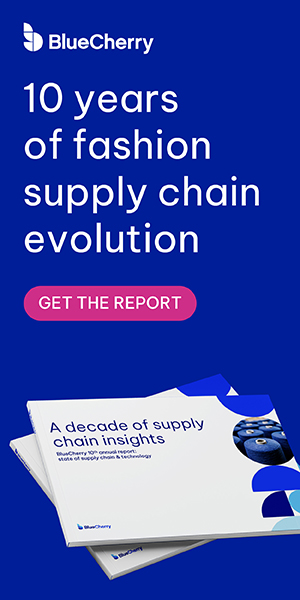Topics
All Together Now: a strategic approach to supplier relationships is happening, and it’s about time

One of the most interesting statistics from the CGS 2024 report on supply chain trends and technology was that 88% of the senior executives we surveyed said they wanted improved supplier relationships.
When asked what steps buyers and sourcing teams should take to improve supply chain performance, 64% of those responding for the ‘Steering Through the Straits’ research said they want realistic delivery schedules. Both of these stats go hand in hand – they are not mutually exclusive because realistic delivery schedules will come with improved supplier relationships.
As the report stated, fashion manufacturers are under pressure to do more – and do it more efficiently, while at the same time reducing costs and being flexible. No easy feat. On the other hand, buyers and sourcing teams need to collaborate more closely with vendors and share risks and rewards by offering long-term commitments in these uncertain economic times we’re navigating.
Some of the case studies highlighted in the report, which is a great advert for the in-depth industry intelligence retailers and brands get when they work with and deploy ERP and PLM tools from BlueCherry, highlight the importance of forging better brand-supplier relationships.
For example, premium kids wear brand Hatley, which specialises in PJs, raincoats and boots, and daywear for baby, girls, boys and women, prioritises long-term relationships and excellent quality. According to the report, it has long-time tie-ups with two production partners — one in India, the other in China — and views these as essential to brand reputation, reliability, and helping to create an excellent customer experience.
Hatley and its suppliers share purchase orders, invoices, packing lists and other shipping documents through the BlueCherry Supply Chain Management solution. This is particularly helpful in India, where the technology becomes an essential way for Hatley and the factories to communicate with each other and meet each other’s needs.
And judging by what we’re seeing in the wider fashion market, a more strategic approach to supplier relationships is happening across the board.
Deeper relationships
Consultants McKinsey & Co suggests the long-term talk about forging better brand-supplier partnerships is now turning into action.
McKinsey has been surveying apparel chief purchasing officers biannually since 2013 – and in its 2023 report, which was released at the end of last year, it says the fashion industry has recognised current market dynamics call for a more strategic approach to their supplier relationships.
With value chains continually under pressure from demand fluctuations and logistics challenges – ongoing since the pandemic – and external forces such as regulation and new market entrants contributing to new standards of speed and digitisation, supplier working partnerships need to change too.
McKinsey found in 2017, 81% of brands included “supplier collaboration and development” among their top three priorities. In 2023, it uncovered that deeper relationships, such as long-term volume commitments and combined three-to five-year plans, made up 43% of apparel’s total supplier base – almost double the case in 2019.
That movement is evidence of a move towards more strategic supplier relationships in fashion.
According to McKinsey, from now until 2028, apparel companies expect to increase their share of deeper relationships to 51% – particularly due to sustainability regulations, speed requirements, and growing digitalisation of supply chains.
An example of this taking place that our readers might wish to check out comes in the form of Ellesse, Berghaus, and Kickers parent company Pentland Brands. Last year, according to Green Retail World, it ran its first ‘vendor roadshow’, gathering its global vendors and partners alongside Pentland’s internal design, brand, and product teams for a summit focusing on sustainability and innovation.
Those in attendance joined circularity workshops and heard from expert speakers talking about what circularity means for the wider fashion world.
Elsewhere, Gap, Hugo Boss, Inditex, Kering and Levi's were among the fashion businesses named on not-for-profit charity CDP’s Supplier Engagement Rating (SER) Leaderboard last year. CDP attributes a SER to companies for their corporate supply chain engagement on climate issues, providing an in-depth record of best practice in this space – so it’s a leaderboard worth striving for fashion brands.
The evidence is mounting up, and the fashion industry is waking up the fact engagement and stronger supply chain relationships are essential in modern commerce.
Connect with one of the BlueCherry team today online to learn about how PLM and ERP can help you build in the supply chain digitisation you need to get closer to and develop a stronger – more strategic – relationship with your suppliers.

